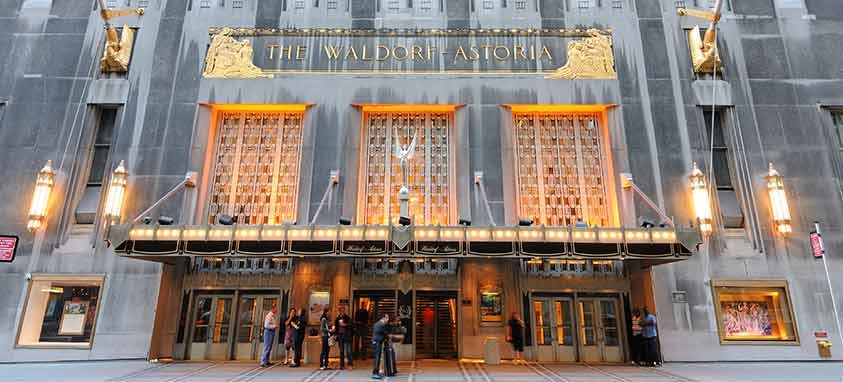NYC hotels are uniting in a pledge to go green. The New York Times reports that 17 properties, representing a combined total of more than 11,000 guest rooms, have joined the NYC Carbon Challenge, a program launched in 2007 by former Mayor Michael R. Bloomberg to reduce greenhouse gas emissions. Participants include high profile properties such as Waldorf Astoria New York, Grand Hyatt New York, 1 Hotel Central Park, Loews Regency New York, The Westin New York at Times Square and the Peninsula New York, all of which are committed to trimming greenhouse gas emissions by at least 30 percent over the next decade.
New York’s Go Green initiative originated with city universities, followed by hospitals, commercial office buildings and multifamily residences. In late 2015, current Mayor Bill de Blasio announced that hotels would join the crusade. The ambitious goal is to reduce citywide greenhouse emissions 80 percent by 2050.
According to Nilda Mesa, director of the Mayor’s Office of Sustainability, buildings are responsible for nearly 75 percent of greenhouse gas emissions in the Big Apple. Getting the cooperation of the hospitality industry could help reduce emissions by more than 32,000 metric tons and save $25 million in energy operating costs.
To gain support, Mesa’s office worked with the Hotel Association of New York City, a trade group that represents 275 hotels in the city. The association hopes to encourage more hotels to join the program.
NYC Hotels Make Strides
According to the New York Times, many of the hotels that signed on to the Challenge are actively meeting sustainability goals.
The Grand Hyatt New York, which has 1,306 guest rooms, is spending $150,000 to install 16,000 LED bulbs in guest rooms and public areas. The work should be completed by late March. It has also invested $150,000 in exhaust controls for its four kitchens, and is sinking $2.3 million on a new building management system to control air-conditioning and heat. Combined, the three projects are expected to reduce Grand Hyatt’s carbon emissions by 2,400 metric tons annually.
The Peninsula New York, which has 235 guest rooms, is spending a quarter of a million dollars to install LED lighting throughout the hotel. The conversion should be complete by the end of 2017. It is also investing $1.1 million in eight new more energy-efficient elevators.
The 1,415-guest room Waldorf Astoria New York will begin a facelift within the next 18-24 months. The restoration will include more energy-efficient windows. The hotel has already cut its emissions by 20 percent since 2005 by switching to biodegradable packaging materials, among other initiatives.
Likewise, The Westin New York at Times Square completed a three-year renovation late last year that emphasized energy conservation. All 873 guest rooms were retrofitted with low-flow showerheads, and old boilers and coolers were replaced with more energy-efficient units. The property will be retrofitted with LED bulbs, and sensors designed to switch off lights after 30 minutes of inactivity will be installed in bathrooms.
And although 1 Hotel Central Park, members of the sustainability-driven boutique brand 1 Hotels, already had LED lights, an energy-conserving air-conditioning system, recycled materials and a fleet of electric house cars manufactured by Tesla, the Challenge encouraged it to hone in on their boiler. Upon investigation, they discovered that powering it with natural gas instead of diesel fuel could reduce the hotel’s emissions 27 percent, a goal they are currently pursuing.




